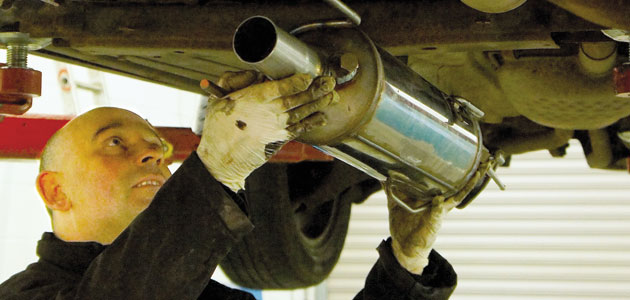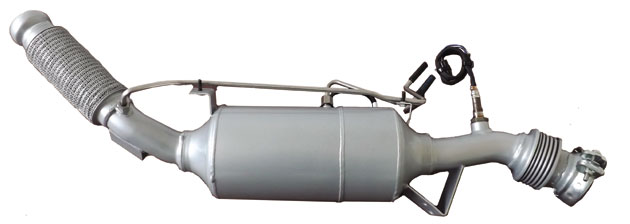
Paul Stubbs, Managing Director of TPCATS, explains.
It is an increasingly common problem on British roads, or should I say driveways: a diesel engine car out of action with the DPF warning light illuminated and the vehicle in ‘limp’ mode.
With luck, the problem will be addressed early and you can salvage the DPF with a forced (static) regeneration in the workshop.
However, if the customer has ignored the warning light and continued driving to the point of DPF failure, a replacement may be necessary. They might request a DPF deletion but, thankfully, this loophole has now been closed with the incorporation of the DPF check into the standard MOT test.

The symptom or the cause?
Before carrying out a forced regeneration or the replacement of a DPF there is a systematic process to reduce the likelihood of a recurrence of the blockage, by heading off all the potential contributors to failure. Simply, replacing the DPF itself would be a classic case of treating the symptom not the cause.
The first thing is to check the service history of the vehicle. More often than not we discover a sub-standard oil has been used. Diesel cars with a DPF fitted will need a high quality, fully synthetic, low SAPS oil. Without it, the DPF will undoubtedly get blocked eventually. If unsuitable oil has been used, change it and advise the customer that it is essential to use the recommended type in future.
Secondly, check the fuel injector and, if necessary, carry out an injector service. A faulty one injects too much fuel, blocking the filter before it has chance to regenerate.
Similar problems can occur with a faulty turbo or EGR valve. If either is not functioning efficiently the problem can manifest itself in a blocked DPF. Failure to address these could lead to exactly the same problem with the replacement.
On vehicles using a fuel borne catalyst to regenerate, it is crucial that EOLYS fluid levels are not too low. But how many drivers even know about this additive? Check the EOLYS tank, top it up, and advise the customer they need to do the same from time to time!

Driving you crazy?
The final and most common cause of DPF blockage is potentially the simplest to address, as it relates to driving habits.
Passive regeneration is one of the manufacturer’s in-built processes for keeping a DPF clear. This takes place automatically in vehicles when the exhaust temperature is high – typically when the car travels at a reasonable speed for a prolonged period of time (such as dual carriageway or motorway journeys). On short, stop-start, or low speed journeys, temperatures may never reach sufficient levels for this process to kick in. By advising customers of the benefits of regular longer journeys, they may be able adjust their driving habits and prevent issues in the future.
For many of these instances, knowledge is the key. By empowering your customers with the information they need there is a strong chance the future technical problems will be eradicated too. For you the key is to recognise the vast number of potential links in the faulty DPF chain. If any are broken, the system can fail.









